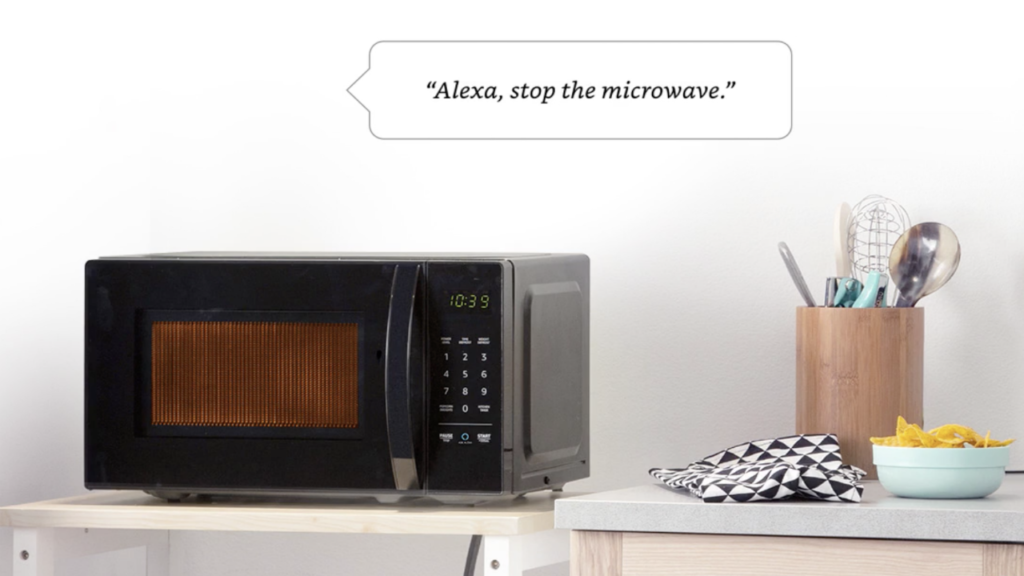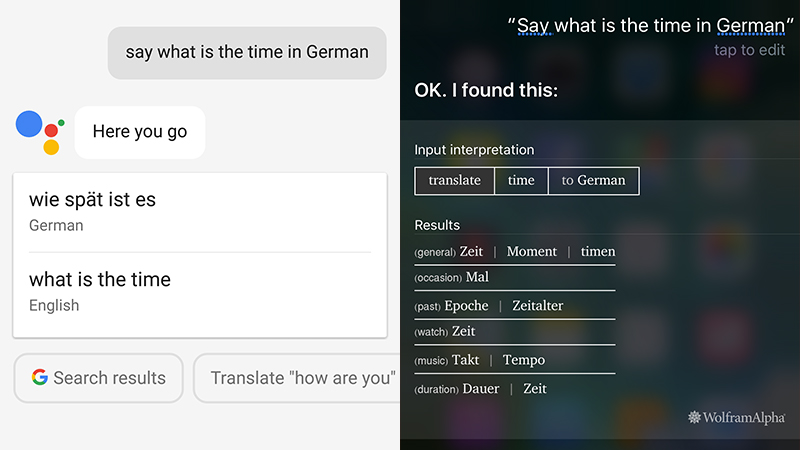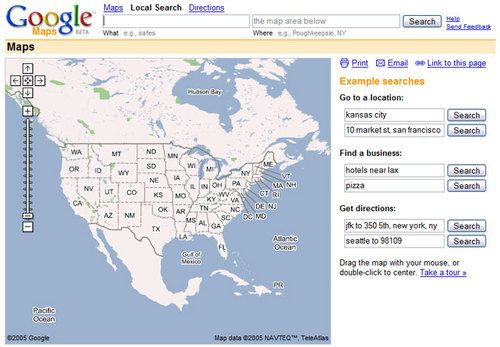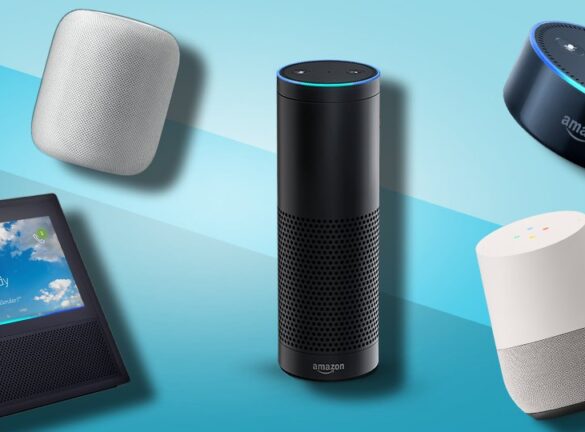
CES 2019 – Pushing the Boundaries of Normality
Here at ROAST we appreciate a decent piece of tech, and with CES providing the stage once more for all the upcoming gizmos and developments from silicon valley and beyond; this year’s event did not disappoint.
On the voice battlefront to date there have been two main players; Amazon and Google. Stakes were firmly being placed in the ground, with the development and release of devices from home hubs to mini speakers, and now they’re opening up the field to compatible devices.
2019 could well be the year of the compatible device, seamlessly able to talk to both platforms with minimal friction. We will start to see a whole host of novel and unique connected devices from toilets (yep) to mirrors and beyond. But with all these new innovations coming to the fore, who will win in the battle of value and compatibility? Who will stand the test of time?
It’s All Greek to Me
Real time conversation translation? Interpreter Mode is one of the shinier features added to the Google Assistant hubs, displays and speakers where two parties who don’t speak the same language can now hold an entire conversation. While not perfect, it’s a great start. Currently supporting 27 languages and piloting in a few hotels, we’re pretty sure more languages and uses will roll out over time. Maybe you can finally have that conversation you always wanted with your mother-in-law or vacant au pair…
Aside from an increase in cross-cultural family communication, it’s clear that Google continues to excel and dominate in neural machine translation. Although Alexa last year announced ambitions to enter the real-time translation sphere, Google’s 12 year history in translation gives its Assistant a significant head-start. To date, Alexa has struggled to adapt as a multi-language voice assistant watch this space.
Google’s superior translation abilities also trump Siri’s
Another thing to consider is the high ownership of Android (5+) phones compared to the number of Alexa device owners. In 2015 there were 41 million smartphone users within the UK alone, with projections showing that by 2022 it could reach almost 54 million. This paired with Android having 49.7% market share of smartphones within the UK towards the end of 2018 means that Alexa will have its work cut out.. Every Android user is a potential Google Assistant user, and Interpreter Mode will surely end up becoming standard on mobile. Unless Amazon can produce a more portable version of Alexa, it’s unclear how they will compete in this space.
You Wouldn’t Ask Your Toaster to Call a Taxi
When it comes to smart devices, not every product needs to be able to do everything. The point of a connected home is that everything becomes a little bit smarter. Wouldn’t it be nice if you never had to change another clock (especially not that bloody one built into the microwave)?
The market for devices that are compatible with both Amazon’s Alexa and the Google Assistant is growing rapidly. From officially partnered SONOS sound bars to various rough and ready independents, both members of the Big Two have recognised the value of these smaller players and have introduced their own respective toolkits for device makers. We have Google Assistant Connect which soft-launched with connected LED lightbulbs in partnership with GE in October and the Alexa Connect Kit (which produced a confusing microwave). The Assistant Connect being Google’s challenge to Amazon’s dominance within this space – the battle of the Connected Home continues!

Would you talk to your microwave?
Whilst the new wave of connected products such as microwaves, fridges, and even bins may seem ridiculous and gimmicky, it’s important to realise that that’s exactly the point. Nobody, and I mean nobody, believes that a voice-activated bin is going to change the world, but this is a time of pure invention and we are now seeing how far we can (and should) take this technology.
The manufacturers of these products are niche, high-end producers who are pushing the boundaries of normality. Pedestrian products like your kitchen bin offer little variance within its product range.
Integrating a voice assistant gives it a novelty factor that could also be useful in giving potential consumers the nudge to purchase. What will be interesting is what the large manufacturers like Samsung and Lenovo will produce after this initial rush of new inventions, selecting the ones they feel would appeal to a mass market.
Hands-free Maps Help
The Google Assistant has already integrated with Google Maps to help you with basic commands such as playing music while you’re travelling (hands on the wheel at all times, please).
Part 2 Assistant Integration is now starting to roll out. This includes sharing your ETA with family and friends or sending out a quick message through WhatsApp, Facebook Messenger and other third-party messaging apps. The “I got stuck in traffic” excuse could soon be extinct.
In this space, Google are heavily reliant on their Android users using Google Maps in their cars as opposed to the in-car navigation system or Amazon Auto, which is a cigarette lighter powered device that connects to the vehicle’s Bluetooth. Google haven’t produced (and most likely won’t) a similar device for the simple reason that they don’t need to. At 13 years old, Maps can afford to be this cocky; it’s not confined to the car like Amazon Auto and is readily available for multiple modes of transport. Google Maps’ flexibility is what lends it longevity.
An early version of Google Maps
Having said that, both device-led strategies are only for the short term. The long-term prediction is that Alexa and/or the Google Assistant will come as a pre- installed feature of your car. Much like choosing your won upholstery, in the future you will also get to choose whether you would like Google or Alexa as your assistant.
Frictionless Travel
Ever since the patchy ‘Boarding Pass’ apps turned up on smartphones four score and many years ago, we’ve been holding our breaths for something better, and Google has now apparently answered our prayers. In addition to helping you navigate the various airport terminals with prompted terminal maps (which we’ve found very helpful on our recent travels), the Assistant will soon be able to help you ‘check in’ to your flight with a polite request as well as automatically bring up the necessary QR codes for scanning. Saving trees and saving time – that works for us!
Not only is this a fantastic use-case for voice, it could also revolutionise how we travel. A process so seamless we won’t have to struggle trawling through emails and PDFs ever again. United Airlines have already developed this for domestic flights so we know it’s only a matter of time before it starts rolling out to other airlines.

United Airlines are leading the way in Voice-enabled travel
If you’d like to know more about the state of voice visibility in Travel, you can read our Voice Search Vertical Report (Q3 2018). We looked at 10,000 key phrases across 23 industry verticals. We’re releasing Q4 2018 soon so keep any eye out for that.
Our Final Thoughts
What we’re now seeing in the voice sphere are the next steps. Google and Amazon already release their most up to date versions and products towards the end of last year. These foundations have been laid to enable the rapid development and release of countless voice assistant enabled devices. How these new products translate from a niche high end designer/manufacturer to a mass market will set the industry tone for years to come.






